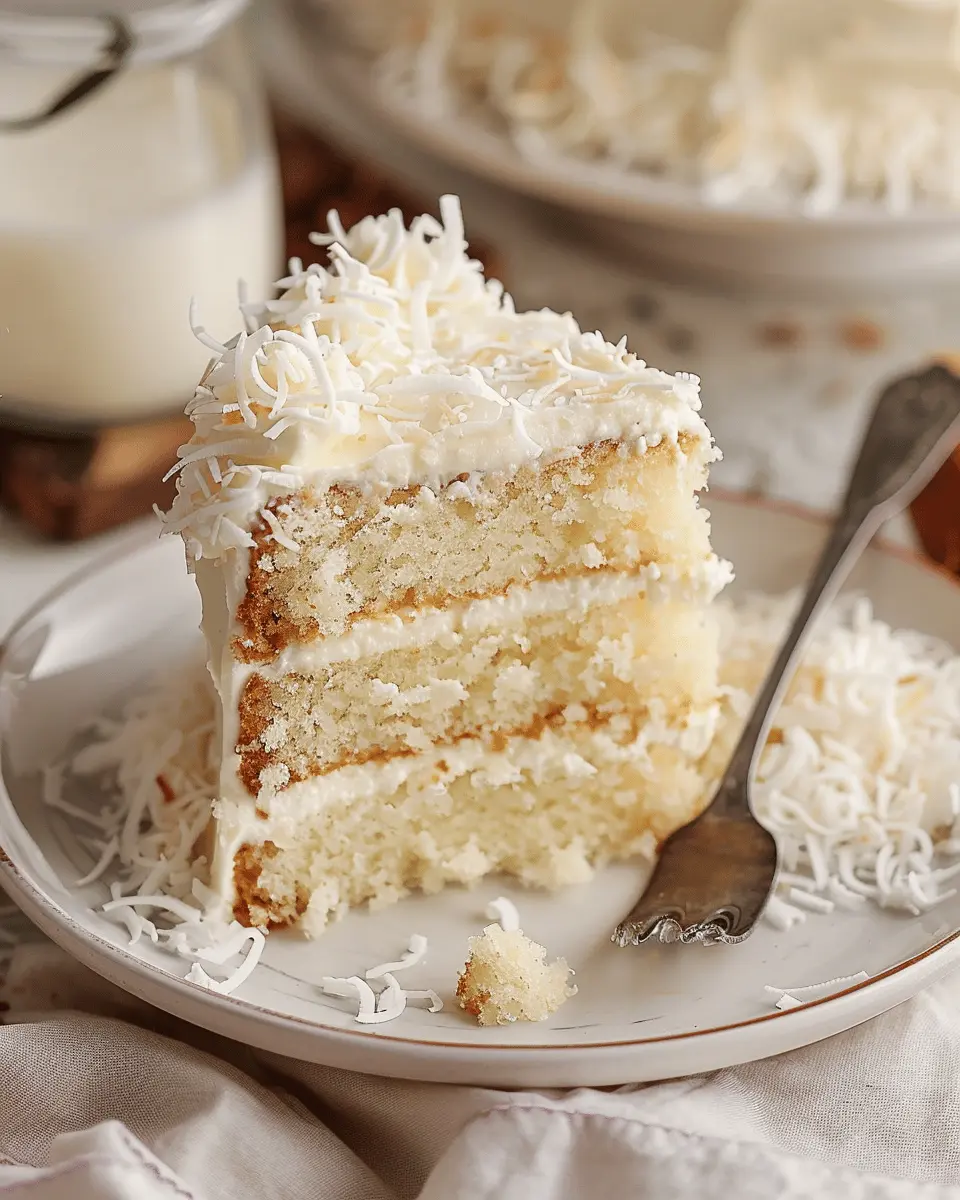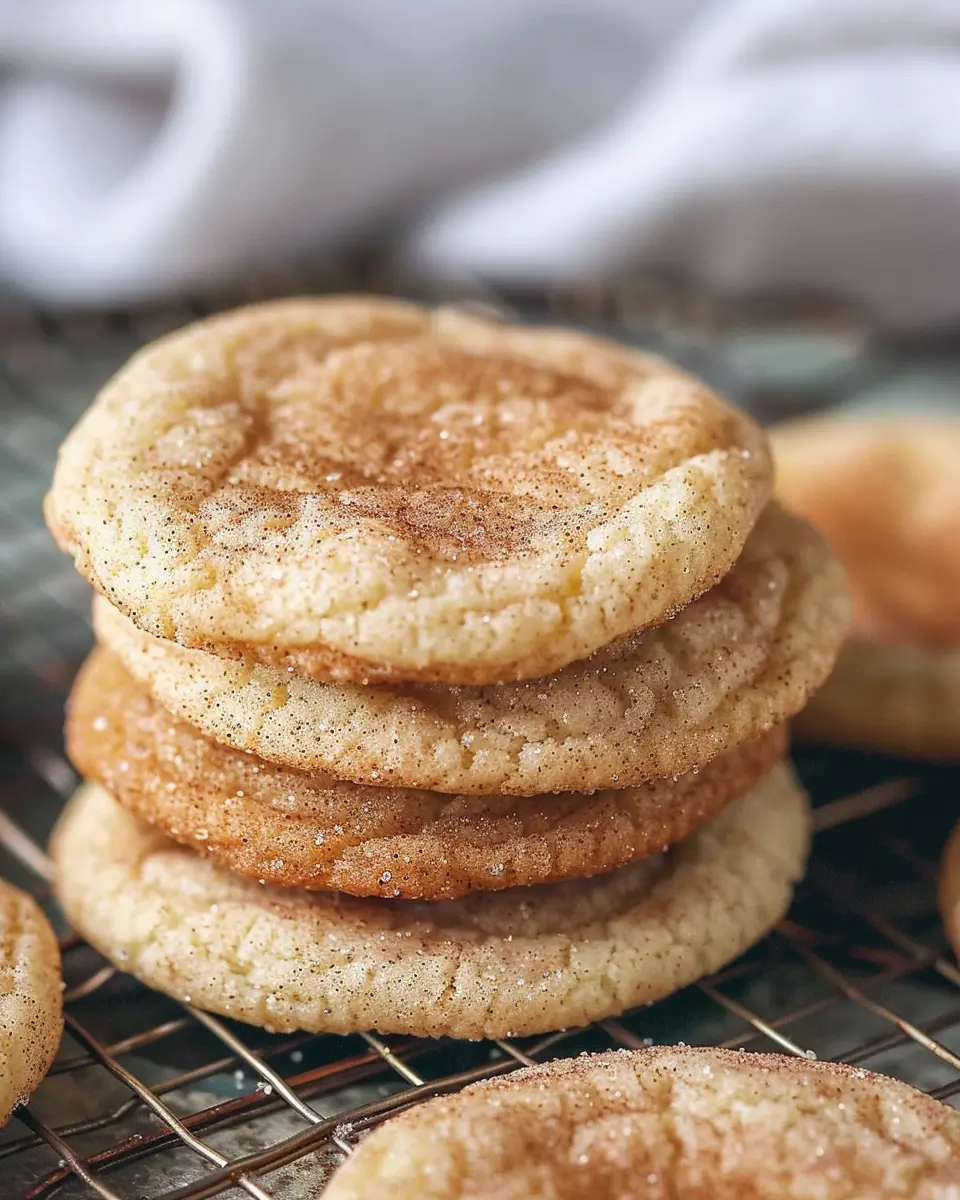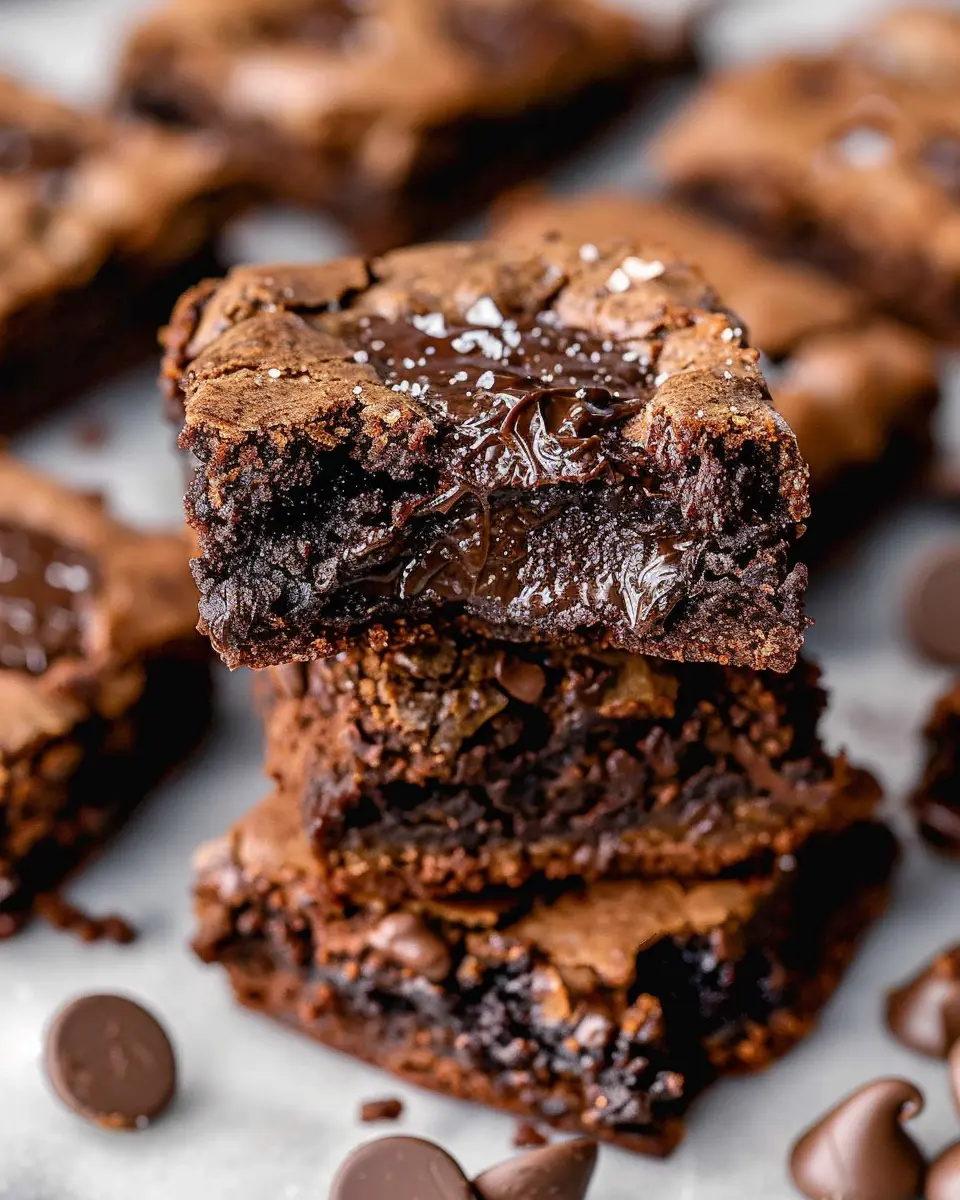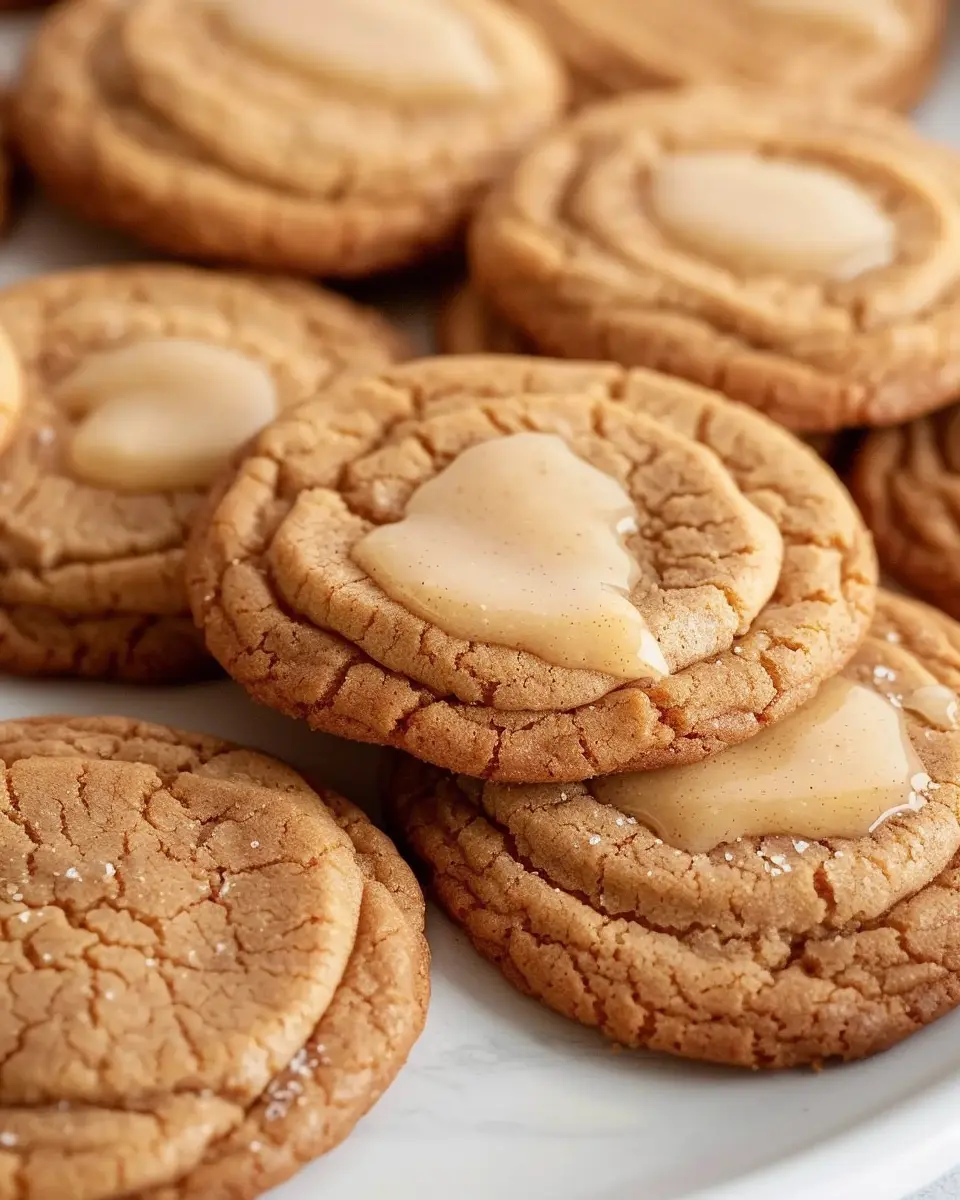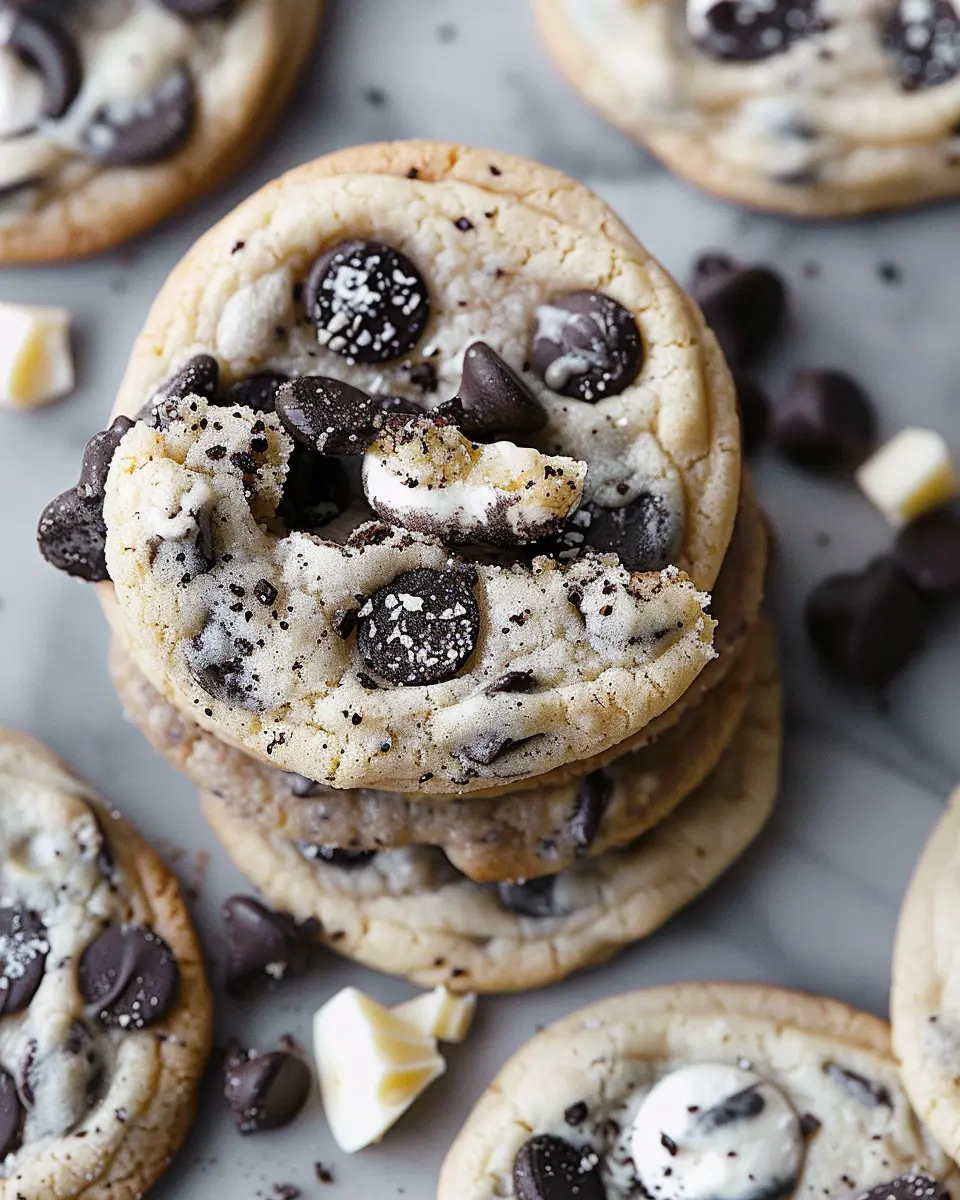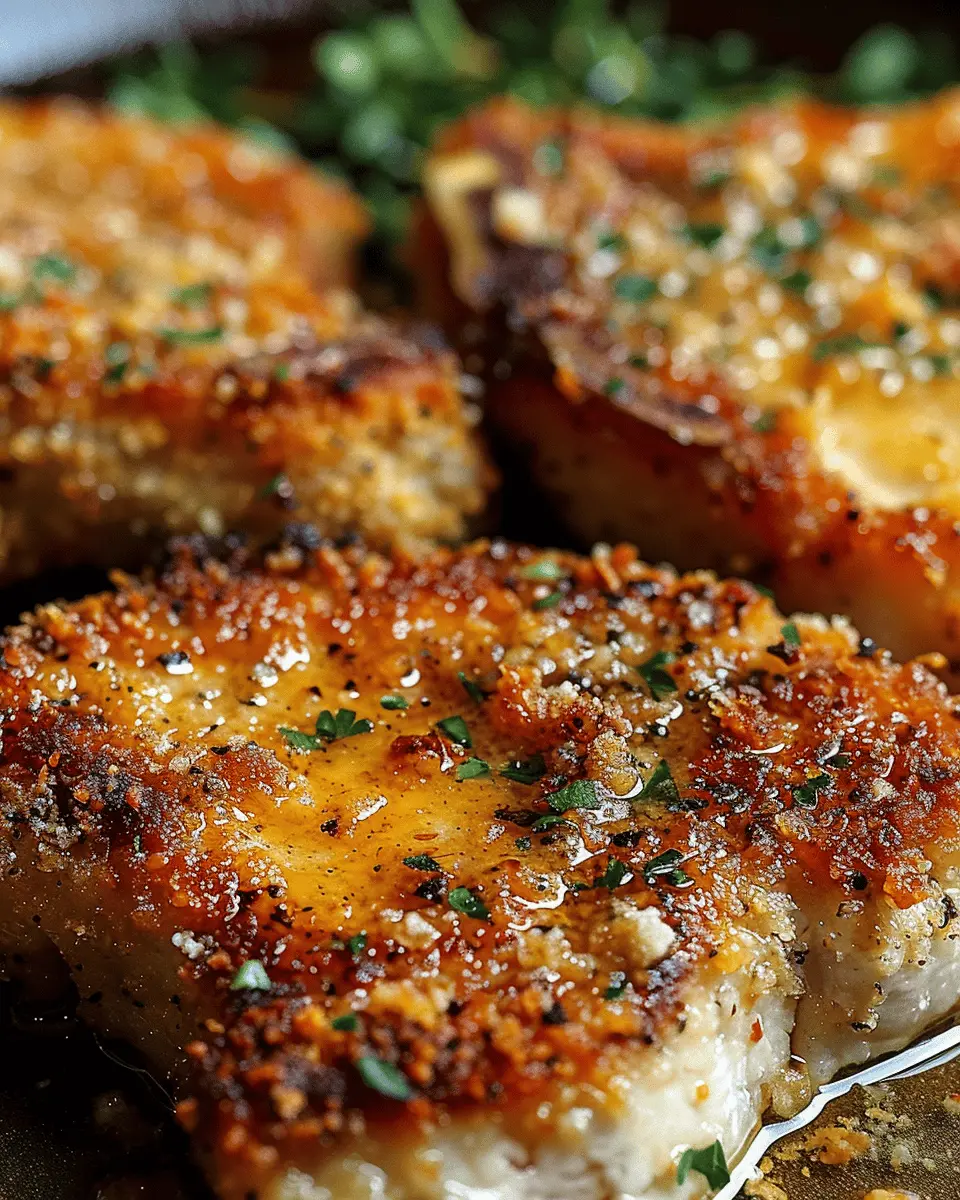Introduction to Coconut Cake
Coconut cake is one of those delightful desserts that can awaken your taste buds and transport you to a tropical paradise. If you’re a young professional juggling a busy schedule, you might be wondering why you should take the time to bake this classic treat. Well, let me share a few compelling reasons that will make you want to roll up your sleeves and start whipping up a homemade coconut cake.
Why Coconut Cake Is a Must-Try for Young Professionals
First off, coconut cake is incredibly versatile. It can serve as the perfect complement to a casual brunch or a glamorous dinner party. Imagine hosting friends for an afternoon get-together—what’s more impressive than a beautifully layered coconut cake? Your guests will be raving about it long after they leave. Plus, baking creates a fantastic atmosphere and is a wonderful way to unwind after a long week at the office.
Moreover, this cake is a celebration of simple ingredients that often evoke nostalgia. Many of us have fond memories of helping a loved one in the kitchen, and a slice of coconut cake can bring those memories flooding back. As you mix the fluffy batter or layer the creamy frosting, you might find this process is as rewarding as the end result.
In addition to being a delicious treat, coconut cake offers nutritional upsides. Coconut meat is rich in medium-chain fatty acids (MCFAs), which can aid in boosting your metabolism and providing energy. When combined with other fresh ingredients, this cake can not only satisfy your sweet tooth but also support a balanced lifestyle.
If you’re feeling adventurous, you can even explore different recipes online. Websites like The Coconut Collaborative offer innovative twists on the classic coconut cake, from vegan adaptations to gluten-free options.
So why not bring a slice of paradise into your home? With its beautiful layers, lush coconut flavor, and a dash of nostalgia, baking a coconut cake is definitely a rewarding endeavor. Let’s dive into this delicious recipe and transform your kitchen into a tropical escape—because you deserve sweetness in your life, even on the busiest of days!
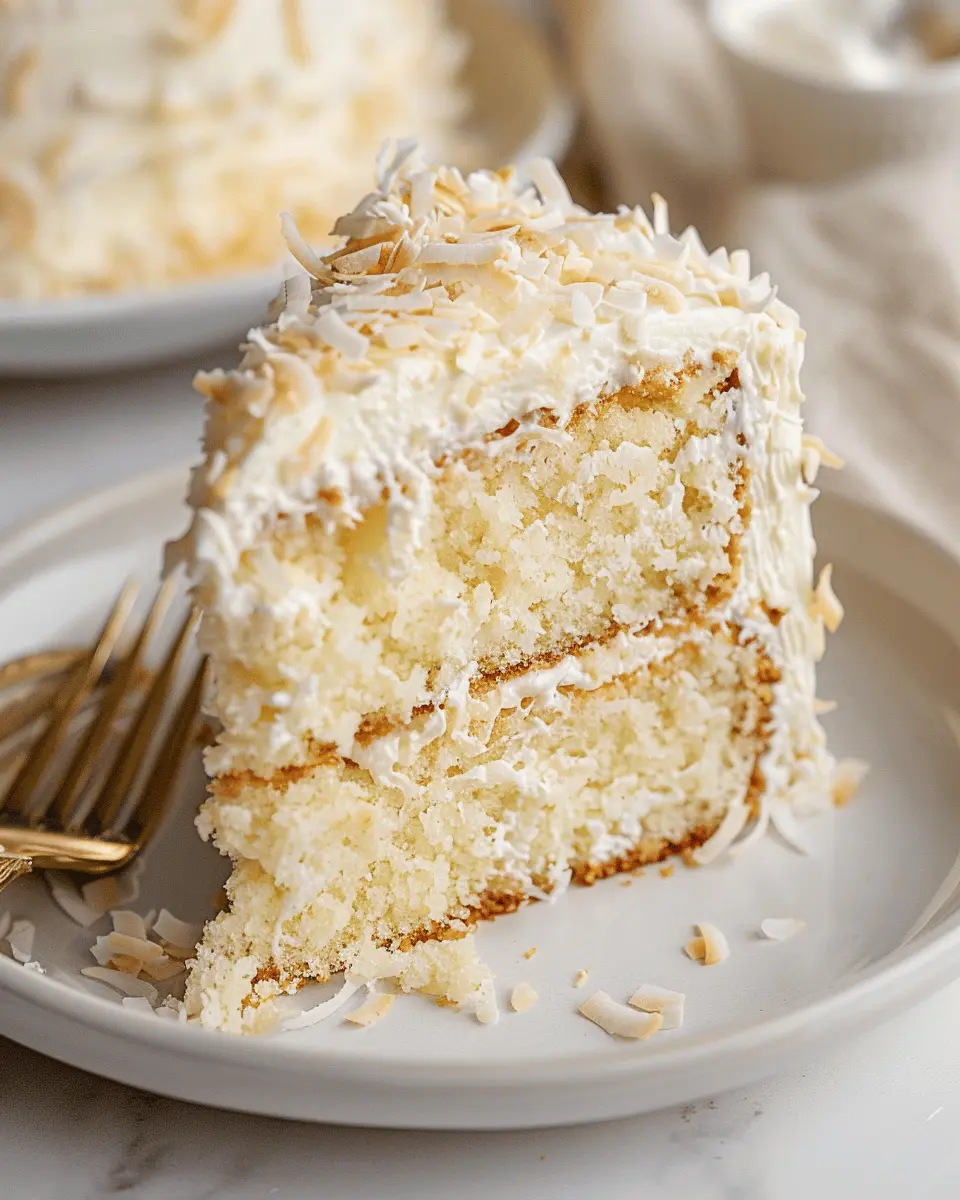
Ingredients for Coconut Cake
When it comes to baking a delicious Coconut Cake, the right ingredients can make all the difference. Let’s break down what you’ll need to create those airy cake layers and that luscious frosting.
Essential Ingredients for the Cake Layers
To prepare the cake, gather the following essentials:
- All-purpose flour – This forms the base of your cake, ensuring a tender crumb.
- Sugar – Granulated sugar sweetens and helps the cake rise.
- Baking powder – A crucial leavening agent for a fluffy texture.
- Salt – It enhances the flavors and balances the sweetness.
- Unsalted butter – Adds richness and moisture; make sure it’s softened.
- Eggs – Essential for binding the ingredients together and providing structure.
- Coconut milk – This adds a wonderful tropical flavor and moisture.
- Shredded coconut – For that irresistible texture and coconut flavor.
Looking for a more in-depth exploration of these ingredients? Check out Serious Eats for their baking tips.
Ingredients for the Coconut Cream Cheese Frosting
Now, let’s whip up that indulgent frosting:
- Cream cheese – The star ingredient that provides creaminess and tang.
- Unsalted butter – Again, softened to blend smoothly.
- Powdered sugar – For sweetness and a velvety texture.
- Vanilla extract – It enhances the overall flavor profile.
- Shredded coconut – Optional, but it adds that delightful finishing touch.
With these quality ingredients, your Coconut Cake will be a delightful centerpiece at any gathering. Think about making this for a friend’s birthday or even a cozy weekend treat!
Step-by-Step Preparation of Coconut Cake
Coconut cake is one of those delightful desserts that can transport you straight to a tropical paradise. With its light, fluffy texture and rich coconut flavor, it’s perfect for any occasion—be it a birthday, a holiday gathering, or just a spontaneous treat for yourself! Let’s dive right into the preparation of this luscious cake, breaking it down into easy-to-follow steps.
Preheat and Prepare Your Pans
To kick things off, you’ll want to preheat your oven to 350°F (175°C). As the oven warms up, grease and flour two 9-inch round baking pans; this will ensure the cake layers release effortlessly once baked. You can also line the bottoms with parchment paper for added insurance!
Blend and Sift the Dry Ingredients
Next, gather your flour, baking powder, and salt. In a medium bowl, sift together 2 cups of all-purpose flour, 1 tablespoon of baking powder, and ½ teaspoon of salt. Sifting not only breaks up any lumps but also aerates the flour, giving your cake an even lighter texture.
While you’re at it, consider checking out Fine Cooking’s guide on baking methodologies for more details on the importance of these ingredients!
Cream the Butter and Sugar Together
Once you have your dry ingredients ready, it’s time to cream together ½ cup (1 stick) of unsalted butter and 1 ¾ cups of granulated sugar. Using an electric mixer, beat them together on medium speed for about 4-5 minutes until the mixture becomes light and fluffy. This step is crucial because it helps incorporate air into the batter, making your cake rise beautifully!
Incorporate the Eggs and Other Wet Ingredients
Now, add 3 large eggs one at a time, making sure each egg is fully incorporated before adding the next. Follow this by mixing in 1 teaspoon of vanilla extract and 1 cup of coconut milk. This is where your cake starts to take on a lovely tropical flavor!
Combine the Dry and Wet Mixtures for the Batter
With your wet and dry ingredients ready, it’s time for a marriage! Gradually add the flour mixture into the butter mixture, alternating with the coconut milk. Start and finish with the flour mixture for optimal results. Give it a gentle stir until just combined; be cautious not to overmix, as this can lead to a denser cake!
Bake the Layers to Perfection
Now pour the batter evenly into your prepared pans, and pop them into the preheated oven. Bake for 25-30 minutes, or until a toothpick inserted into the center comes out clean. Keep an eye on your cakes; you don’t want them to get too brown!
Cool the Cakes Before Frosting
Once baked, take the layers out of the oven and let them cool in the pans for about 10 minutes. Then, carefully remove them from the pans and transfer them to a wire rack to cool completely. Patience is key here—frosting a warm cake can lead to a melty mess!
Prepare the Coconut Cream Cheese Frosting
While the layers cool, whip together a heavenly frosting. Beat 8 oz of cream cheese and ½ cup of unsalted butter until smooth. Gradually add 4 cups of powdered sugar and ½ cup of shredded coconut. This frosting is not only delicious but also takes your coconut cake to the next level.
Assemble and Decorate Your Coconut Cake
Finally, it’s time to bring your cake to life! Place one layer on a serving plate and spread a generous layer of frosting on top. Top it with the second layer and apply a thin crumb coat all over the cake. After refrigerating the cake for about 30 minutes, apply a thick layer of frosting and toss some additional shredded coconut on top for that magnificent finishing touch!
And there you have it—your homemade coconut cake is ready to shine at your next gathering! Slice, serve, and watch it disappear in no time. Enjoy!
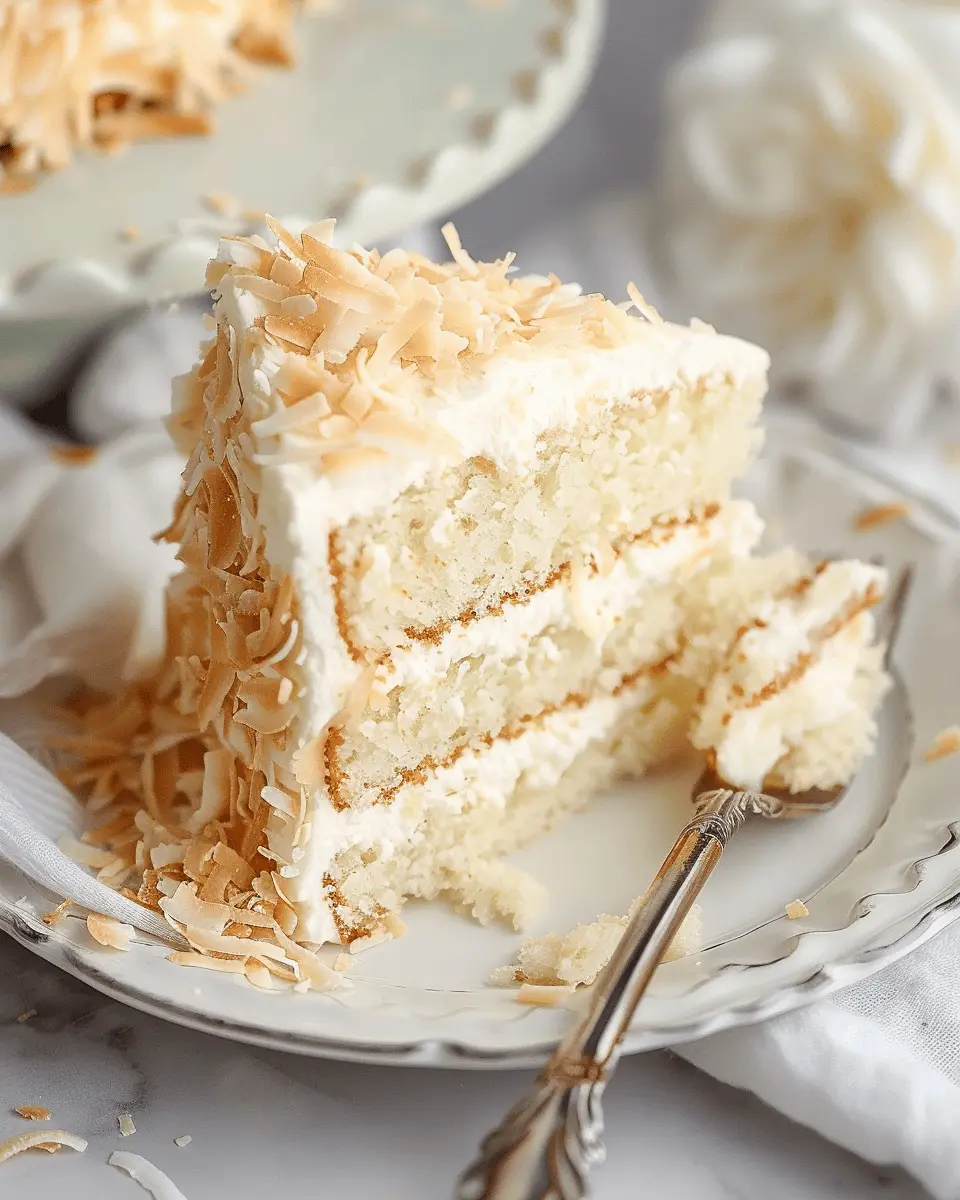
Variations on Coconut Cake
Coconut cake is a delightful dessert that can be a canvas for many creative flavors. If you’re feeling adventurous, here are two exciting variations to try.
Introducing Chocolate Coconut Cake
Imagine biting into a moist coconut cake enriched with the deep, chocolatey taste of cocoa. Chocolate Coconut Cake combines the best of both worlds, merging rich chocolate flavor with the tropical sweetness of coconut.
How to Make It:
- Substitute cocoa powder for half of the flour in your coconut cake recipe.
- Add chocolate chips or a layer of ganache for an extra chocolate boost.
- For a finishing touch, sprinkle shredded coconut on top.
Many home bakers rave about this combination. It’s perfect for those who want to indulge in chocolate, but still crave that coconut kick. Plus, you can find many great recipes on sites like Food Network to guide you!
Tropical Variations with Fresh Fruits
Elevate your classic coconut cake by incorporating fresh fruits that complement its flavor. Think about adding mango, pineapple, or passion fruit for a tropical twist. Each of these fruits adds a bright, zesty flavor that pairs beautifully with coconut.
Ideas for Fruit Variations:
- Mango Coconut Cake: Add fresh mango puree to your batter and top with a mango glaze for extra sweetness.
- Pineapple Coconut Cake: Fold crushed pineapple into the batter for a moist, fruity cake. You could even use coconut cream in the frosting!
- Passion Fruit Coconut Cake: Drizzle a passion fruit glaze over your cake for a tangy finish that will wow your guests.
With its versatile nature, coconut cake becomes a fresh dessert that can surprise and delight your friends and family. Whether you opt for chocolate or a fruity variation, the possibilities are endless!
Baking Notes for Coconut Cake
Tips for Ensuring Moistness
To keep your Coconut Cake deliciously moist, consider these simple tricks:
- Use Coconut Milk: Substitute regular milk with coconut milk for an extra boost of flavor and richness.
- Add Sour Cream: Incorporating sour cream into your batter not only enhances the flavor but also helps maintain moisture.
- Don’t Overbake: Keep a close eye on your cake as it bakes. Overbaking can lead to a dry texture. Start checking for doneness a few minutes before the recipe suggests.
Importance of Ingredient Temperature
The temperature of your ingredients can significantly affect the outcome of your Coconut Cake.
- Room Temperature Eggs: Make sure your eggs are at room temperature for even mixing and to create a more stable batter. This helps the cake rise beautifully.
- Butter: For optimal creaming with sugar, use softened butter. Cold butter doesn’t blend well, leading to uneven texture.
Baking can be a science, and understanding these small details makes a big difference. For more tips on ingredient temperatures, check reliable sources like King Arthur Baking.
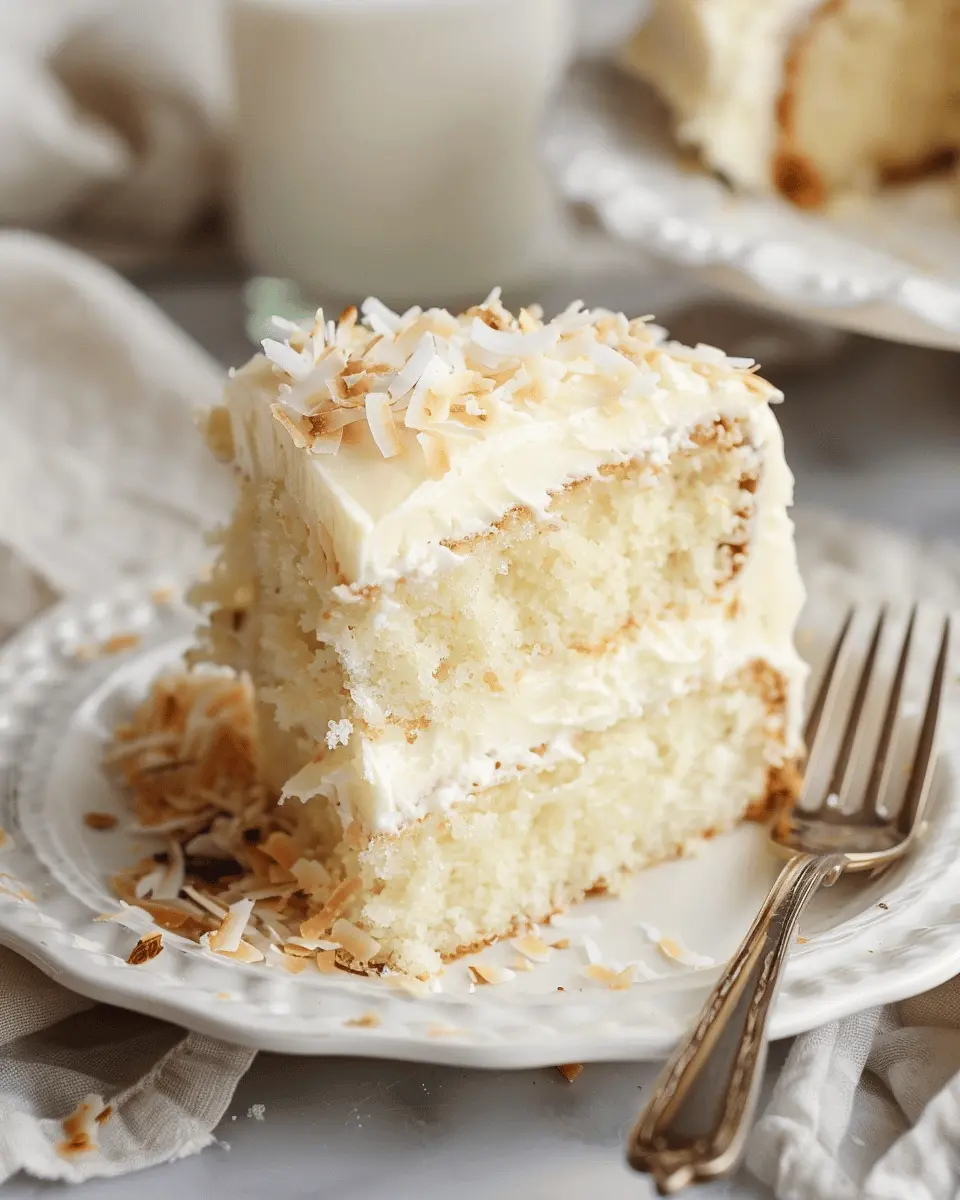
Serving Suggestions for Coconut Cake
Perfect Pairings with Coffee or Tea
When serving your Coconut Cake, consider the magical combination of flavors that it can bring when paired with coffee or tea. The creamy texture and subtle sweetness of the cake delightfully complement the rich, robust notes of coffee, creating a heavenly experience. Try it with a smooth latte or a dark roast for a treat that elevates your afternoon catch-up or cozy weekend brunch. If you’re leaning towards tea, a light Earl Grey or a refreshing chamomile works wonderfully, enhancing the cake’s tropical notes.
Creative Presentation Ideas
Presentation can make all the difference! Serve your Coconut Cake on a rustic wooden board, garnished with fresh coconut flakes and mint leaves for a tropical vibe. Alternatively, consider using elegant cake stands for a more formal gathering. Personal touches, like adding edible flowers or fruit slices, can also enhance visual appeal. For a fun twist, why not serve individual slices in clear glass jars for a casual outdoor picnic? Your guests will appreciate the creativity, and it’ll make for beautiful photos to share!
For more ideas on serving delicious desserts, check out this expert guide on dessert pairing.
Tips for Making Perfect Coconut Cake
Common Mistakes and How to Avoid Them
Coconut cake can be deceptively simple, but a few common pitfalls can trip you up. One frequent mistake is not measuring the ingredients accurately. A kitchen scale is your best friend here—ensure you’re using the right proportions for your coconut cake to achieve that perfect texture. Overmixing your batter can also lead to a dense cake; mix just until combined!
Another thing to keep an eye on is the coconut. Using unsweetened shredded coconut can elevate your cake without making it overly sweet. And speaking of sweetness, keep an eye on your oven temperature. Every oven is different, so consider investing in an oven thermometer for accuracy.
Adjusting for Flavor Preferences
Coconut cake is wonderfully adaptable! If you’re not a fan of the traditional sweetness, try using less sugar or experimenting with flavored extracts—almond or vanilla can add a delightful twist. You could also fold in crushed pineapple or zest from lime or lemon for a refreshing acidity.
For those who love a richer flavor, adding a layer of cream cheese frosting instead of traditional buttercream can create a decadent finish. Consider checking out additional tips from Bon Appétit on how to personalize your coconut cake flavors!
No matter your preferences, remember that the joy of baking is in the personal touches. Happy baking!
Time Details for Coconut Cake
Preparation Time
Before you dive into baking your heavenly Coconut Cake, you’ll need approximately 20 to 30 minutes for preparation. This includes gathering all your ingredients, measuring them out, and mixing the batter. Trust me, a little bit of organization goes a long way in ensuring a smooth baking experience!
Baking Time
Once your batter is ready, it’s time for the magic to happen. Your Coconut Cake will require about 30 to 35 minutes in the oven. Keep an eye on it towards the end—nobody enjoys a dry cake!
Total Time
In total, from start to finish, you’re looking at around 1 hour to 1 hour and 5 minutes for your delicious Coconut Cake. Perfect for a relaxed evening baking session or a weekend treat! Afterward, you’ll get to indulge in the delightful fruits of your labor. Ready to impress your friends and family? For more tips on perfecting your baking skills, check out this expert baking guide.
Nutritional Information for Coconut Cake
Calories in a Slice of Coconut Cake
If you’re indulging in a slice of Coconut Cake, you’re likely curious about its caloric value. On average, a typical slice contains around 350-400 calories, making it a delightful yet calorie-dense treat. Though it’s perfect for celebrations, it’s wise to enjoy it in moderation, balancing it with healthier meals throughout your day.
Nutritional Breakdown
When you savor a slice of this delicious cake, here’s what you can expect nutritionally:
- Fat: Approximately 20 grams, with a mix of saturated and unsaturated fats coming from coconut and other ingredients.
- Protein: About 3-4 grams, to help keep you feeling satisfied.
- Carbohydrates: Roughly 50-55 grams, primarily from sugar and flour, giving you that delightful sweetness.
Consider pairing your Coconut Cake with a fresh fruit salad or a dollop of Greek yogurt for added nutrients. For more detailed nutrition stats, check out resources like USDA FoodData Central or MyFitnessPal. It’s all about enjoyment and balance!
FAQs about Coconut Cake
Can I Use Different Types of Coconut?
Absolutely! While traditional Coconut Cake recipes often call for shredded sweetened coconut, you can experiment with various types. Unsweetened shredded coconut provides a more natural flavor, while coconut flakes offer a different texture. If you’re feeling adventurous, consider using coconut cream or milk in the batter for added richness. The more coconut, the better, right?
How to Store Leftover Coconut Cake?
Leftover Coconut Cake can be a delightful treat for days! To keep it fresh, store it in an airtight container at room temperature for up to three days. If you need to store it longer, pop it in the fridge where it can last up to a week. Just make sure to wrap it well to prevent it from drying out. For even longer storage, consider freezing slices; wrap them in plastic wrap and aluminum foil, and they’ll stay good for up to three months!
What Can I Substitute for Ingredients?
Sometimes, ingredient substitutions can save the day or cater to dietary preferences. If you’re out of cake flour, all-purpose flour works fine—just sift it well. For a dairy-free option, almond milk makes a great alternative to buttermilk, adding a lovely nutty flavor. Don’t have oil? Melted butter can be a fantastic swap as it brings a rich taste. And if you want to reduce sugar, try using honey or maple syrup instead for a naturally sweet texture.
Exploring these FAQs can take your Coconut Cake to new heights, making it truly yours! For more baking tips and ingredient substitutes, check out Serious Eats for a wealth of resources.
Conclusion on Coconut Cake
Final Thoughts on Baking and Enjoying Coconut Cake
Baking a Coconut Cake is more than just a treat; it’s an experience filled with delightful aromas and a touch of tropical charm. The buttery layers, paired with fluffy coconut frosting, create a dessert that’s perfect for celebrations or cozy gatherings. Remember, using high-quality ingredients, like fresh coconut, can elevate your cake to new heights. Whether you’re savoring a slice with coffee or sharing it at a party, this cake never fails to impress. So, don your apron, and let the joy of baking fill your kitchen. For more tips and inspiration, you might check out BBC Good Food for additional baking ideas!
PrintCoconut Cake Made Easy: An Indulgent Treat for Everyone
Coconut Cake is a deliciously moist dessert that combines rich flavors and a fluffy texture, perfect for any occasion.
- Prep Time: 20 minutes
- Cook Time: 35 minutes
- Total Time: 55 minutes
- Yield: 12 servings 1x
- Category: Dessert
- Method: Baking
- Cuisine: American
- Diet: Vegetarian
Ingredients
- 2 cups all-purpose flour
- 1 1/2 cups granulated sugar
- 1 cup coconut milk
- 1 cup shredded coconut
- 1/2 cup unsalted butter
- 4 large eggs
- 2 teaspoons baking powder
- 1 teaspoon vanilla extract
- 1/2 teaspoon salt
Instructions
- Preheat your oven to 350°F (175°C).
- In a large bowl, cream together the butter and sugar until light and fluffy.
- Add the eggs one at a time, beating well after each addition.
- Stir in the vanilla extract and coconut milk.
- In a separate bowl, combine the flour, baking powder, and salt.
- Gradually add the dry ingredients to the wet mixture and mix until just combined.
- Fold in the shredded coconut.
- Pour the batter into a greased cake pan and smooth the top.
- Bake for 30-35 minutes, or until a toothpick inserted in the center comes out clean.
- Let the cake cool before serving.
Notes
- For extra coconut flavor, use coconut extract in addition to vanilla.
- Top with whipped cream and toasted coconut for garnish.
Nutrition
- Serving Size: 1 slice
- Calories: 350
- Sugar: 22g
- Sodium: 250mg
- Fat: 15g
- Saturated Fat: 10g
- Unsaturated Fat: 4g
- Trans Fat: 0g
- Carbohydrates: 45g
- Fiber: 1g
- Protein: 4g
- Cholesterol: 80mg
Keywords: Coconut Cake
